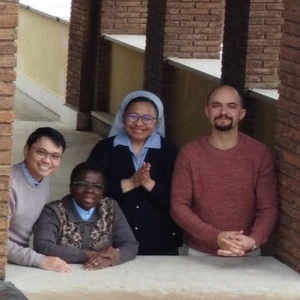Peter MALONE
Chevalier Family Stories, Photos
Chevalier Family Stories, Photos
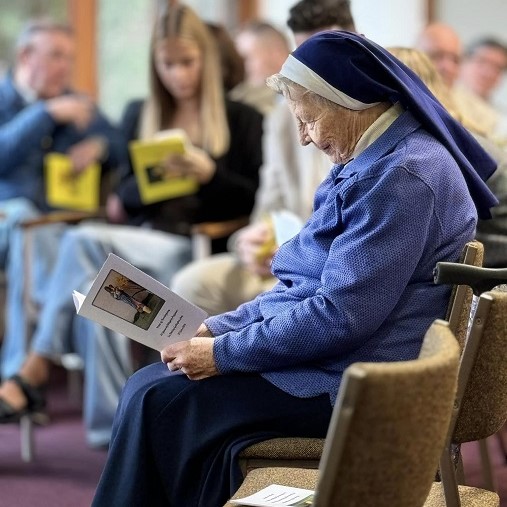
First OLSH Australia,
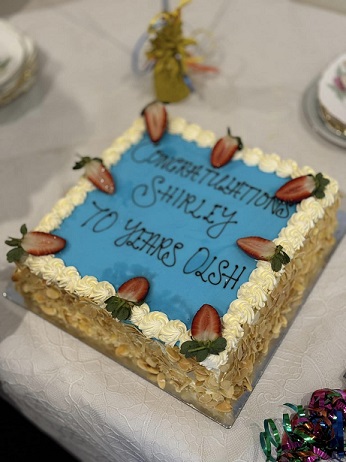
Sister Shirley Gallagher celebrates 70 years of profession at Bentleigh
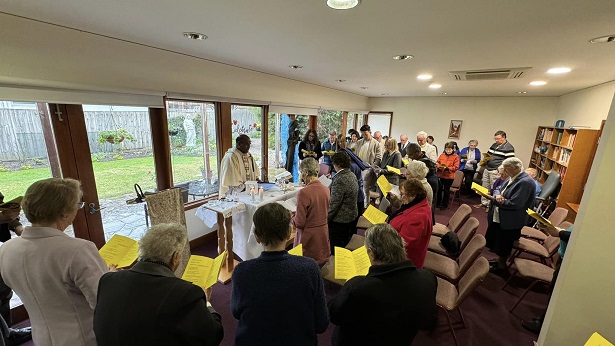
The Laity of the Chevalier Family

New group in South Africa

New group in PNG
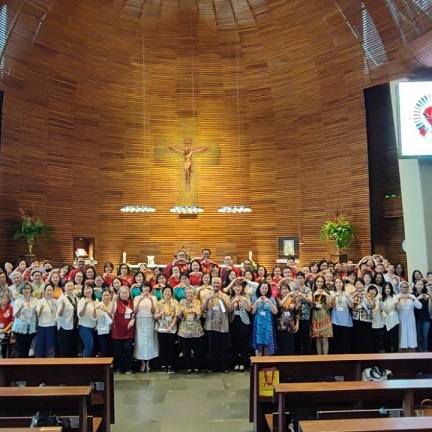
Large group in Indonesia
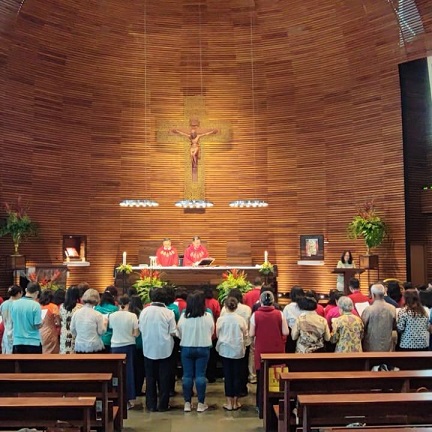
Jules Chevalier would be happy
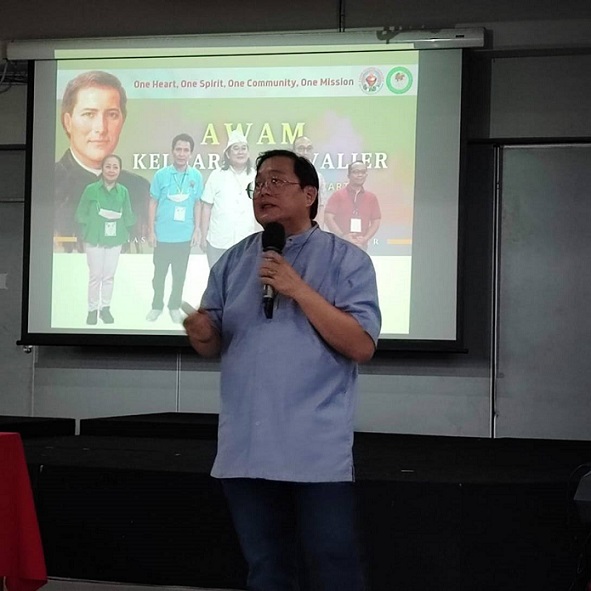
MSC Ongoing Formation Commission. Heartfelt congratulations
MSC Ongoing Formation Commission Heartfelt congratulations
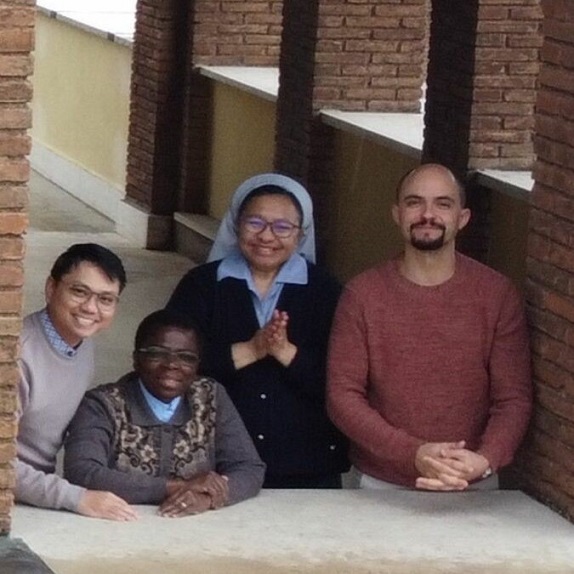
to the eleven Trainees who completed the 14-week English Language Training in the Practice of Group Facilitation!! Online Graduation Ceremony June 14, 2024
On Friday June 14 the following participants graduated during an online ceremony;
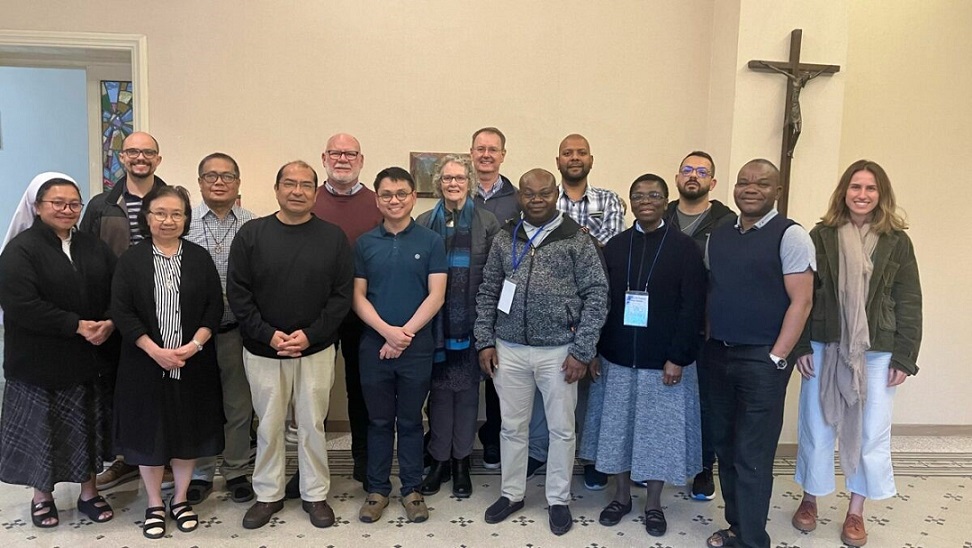
Fr. Celestin Bela MSC from the UAF working in South Africa
Fr. Chung Minh Tran MSC from the Australian Province Vietnamese community, in ministry in Kippax Parish Canberra, Australia
Sr, Maria Eufrasia Wea FDNSC a member of the FDNSC Congregational Leadership Team based in Rome, originally from Indonesia
Fr. Gene Pejo MSC a member of the General Leadership Team based in Rome, from the Philippines Province
Fr. Humberto Henrique da Silva MSC, of the Rio de Janeiro Province, ministry in Niteroi Parish, and Provincial Council.
Fr. Kimi Vunivesilevu MSC of the Australian Province, Superior of the Douglas Park community and Provincial Council
Sr. Marife Mendoza FDNSC Superior General, from the FDNSC Philippines Region.
Fr. Washington Pablo de Oliveira Moura MSC of the Rio de Janeiro Province, Formator, parish, and Provincial Council
Fr. Peter Hendriks MSC, Province Secretary of the Australian Province based in Sydney
Ms. Raissa Gerheim Vieira, a lay pyschotherapist and facilitator, closely working with the MSC Rio de Janeiro Province.

Fr. Danh Doan MSC from the Australian Province Vietnamese community working as a Formator in Vietnam, received a certificate of acknowledgement on the completion of the 12 weeks on online study. He was unable to participate at this stage int he 2 week residential practicum.

Residential Practicum in Rome, May 2024.
Accompanying the graduands were the four Trainers: Ms. Carol Dyer LCF (Australia), Fr. Ireneo Lee MSC (South Korea), Fr. Tony Nolan MSC (Irish Province), and Fr. Chris Chaplin MSC (GLT). We extend our sincere gratitude to the trainers who dedicated their time and expertise to accompanying the Trainees through the program.
Graduation was a recognition of the satisfactory completion of the English language Training in the Practice of Group Facilitation; a minimum of 210 hours dedicated to the Training, including 100 online submissions, 5 hours of Community of Practice (Triads), 12 hours of Online Learning Community sessions, 11 days of Residential Practicum in Rome, and 24 hours of Trainer Accompaniment half online and half face to face, over a total of14 weeks.

What some Trainees said about the course:
“Yes, the course has a foundation, which is the Spirituality of the Heart and Community Discernment. From this, I realised that the programme followed a formative itinerary, allowing us to integrate our knowledge and practices with new content and a new way of approaching working with a group. The Practicum was essential for us to be able to align what we had learnt with our future as facilitators. And the course gave me the security to be considered as a facilitator.”
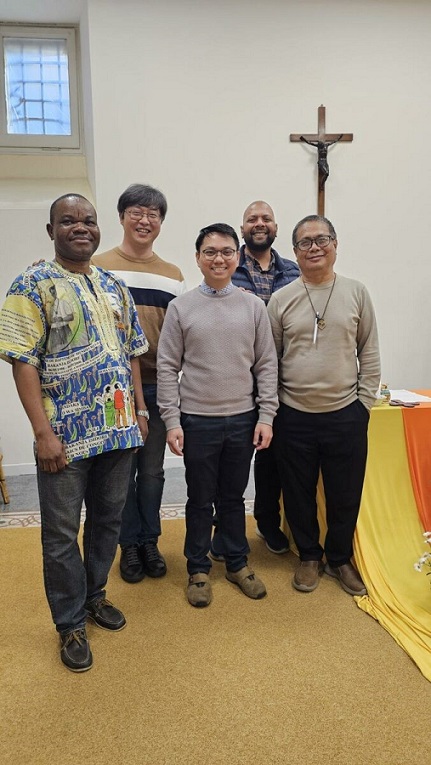
“I believe that all the leaders of our Chevalier Family should go through this course. Or as preparation for those who take on leadership roles in our Congregation. With a new approach, we can change the way we think and decide things.”
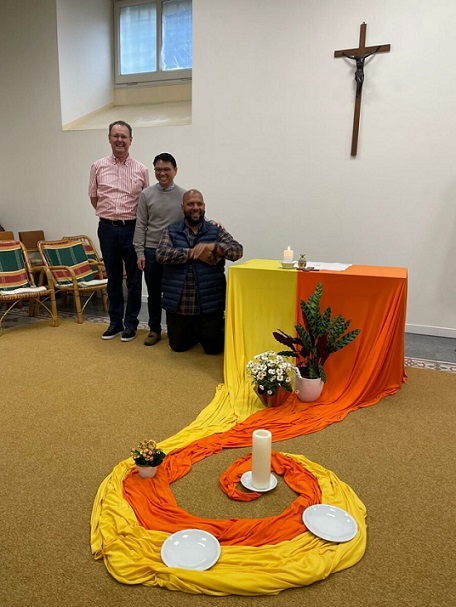
“This programme is a wholistic one, covering many aspects of facilitation: the person of the facilitator, the role and tasks, the system, group dynamics, communication, etc… It has given us knowledge as well as concrete skills and tools. Moreover, it has changed our mindset and transformed our being…and the way I serve. We have time to reflect, relish and translate into action what we are learning. The regular accompaniment is an invaluable learning experience.”
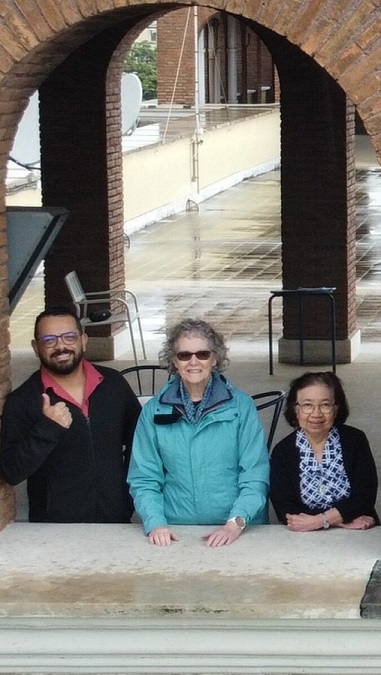
“I would highly recommend this Course to others, especially to our leaders/members. This is a course that is wholistic and grounded in the Spirituality of the Heart. It gives the theory as well as the practical skills.”
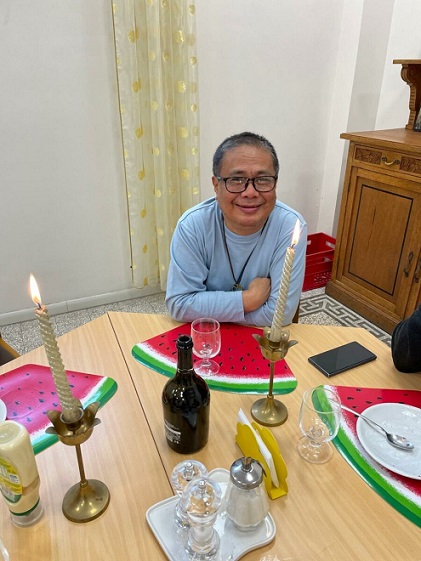
The Training is a work of the MSC Ongoing Formation Commission and was first constructed as an online answer to the restrictions imposed during the COVID 19 pandemic. The original online program took a team of 5 MSC, 12 months to build, Tony Nolan (Irish Province), Ireneo Lee (South Korea), Georges Diabone (U.A.F.), Luis Carlos Araujo Moraes (Sao Paolo), and Chris Chaplin (General Leadership Team). In 2021 we had 9 MSC graduate from this online program.
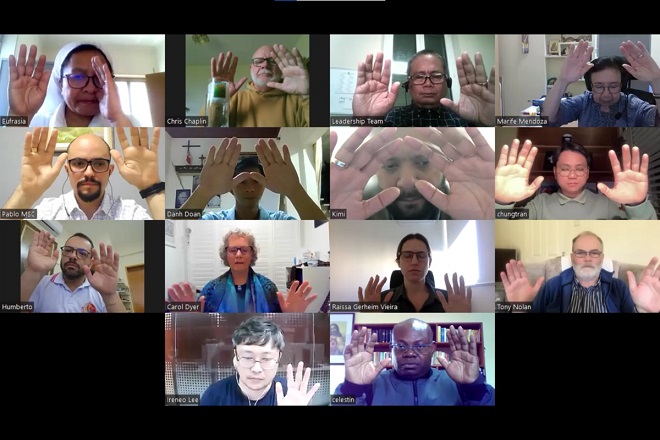
Course Blessing
This year’s Training was opened to the whole Chevalier Family and no longer restricted to Ongoing Formation. We are excited to begin a Spanish Language Training this year specifically constructed for the Chevalier Family in Latin and South America. We are fortunate that three of our newly graduated Trainees, who were already experienced in facilitation, Humberto, Raissa, and Pablo, will be the Trainers for this program, with Chris Chaplin supporting them as Training Supervisor. This Training begins on June 24, 2024, and will hold its residential practicum in Juiz de Fora, Brazil. A group of thirteen participants have registered for this Spanish Language Training. We wish them well and ask you to pray for their progress through the course.
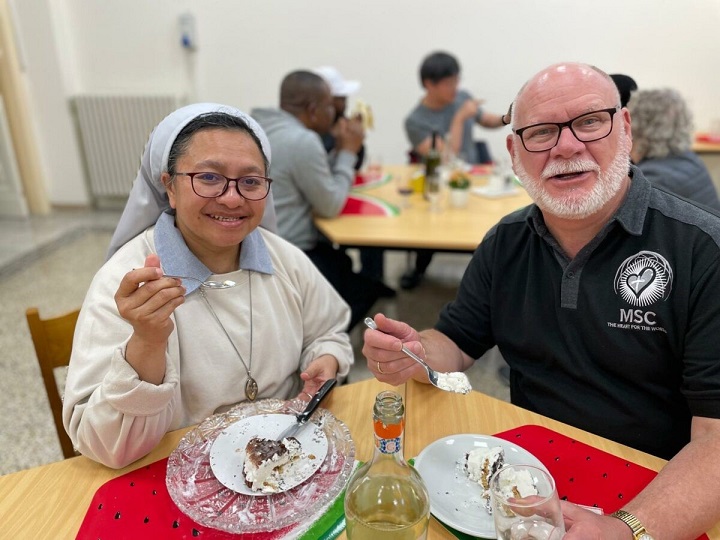
Chris Chaplin MSC
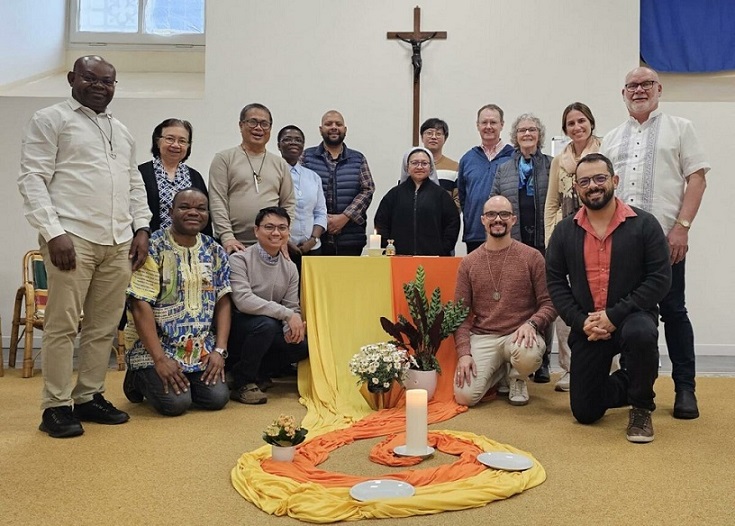
MSC Mission Office, end of financial year
MSC Mission Office, end of financial year
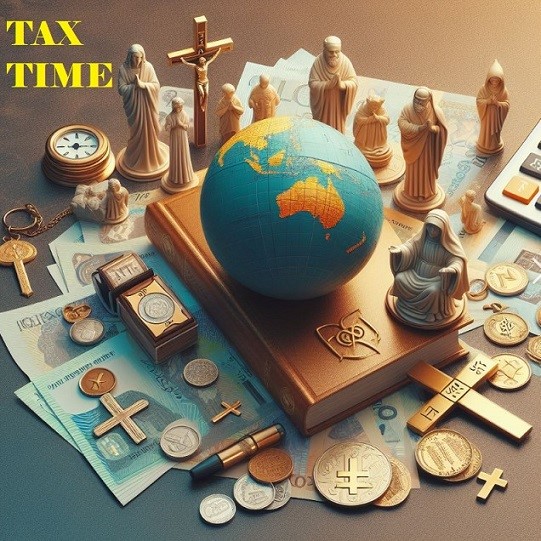
The Office depends on donations – it’s the end of the financial year.
Our challenges and opportunities in 2024

The year 2024 is not an easy one for anyone. We face the threats of war, labour shortage, materials supply disruption, loss of real wages, inflation and so on. But we are not alone in this struggle.
We have many good people at all levels internationally, nationally, and locally. They are doing great work to solve the many issues and to help people at home and overseas. We are grateful for your generosity and resourcefulness.
The Mission Office is also affected by these challenges. We receive less funds and have fewer donors as people age and die. This means we can fund fewer projects for people who need our help.
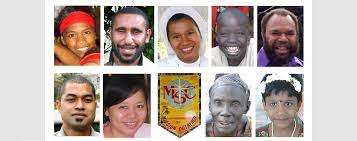
But we are not giving up.We are launching into the next 25 years with a vision to do more in every category of Projects. Our Directors and Boards overseas are sending in applications for many worthy causes, and we are doing our best to support them. Our people are also reporting back to us the outcomes and impacts of the projects we fund.
The needs are still great. We are moved by the stories of people who live with great disadvantages that affect their health and advancement in life. They lack clean water, quality education, adequate healthcare, and a safe environment. They also need spiritual guidance and support from their local churches and communities.
Our mission and inspiration
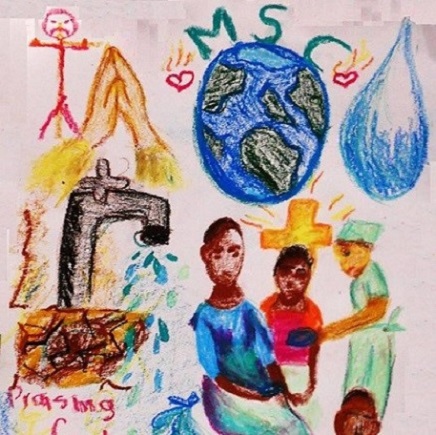
Jesus challenges us to understand and live more fully our faith and his command to “love one another”. He calls us to move from worry and pessimism to active hope. He reached out to people to heal them so they could live a full, fruitful life.
The miracles we work in our time are to help people to stand up and walk; to live more fully.
The MSC Mission Office wants to give everyone a hand up in life. To give a chance of a good, decent life. To give so each generation can live better in joy and hope.
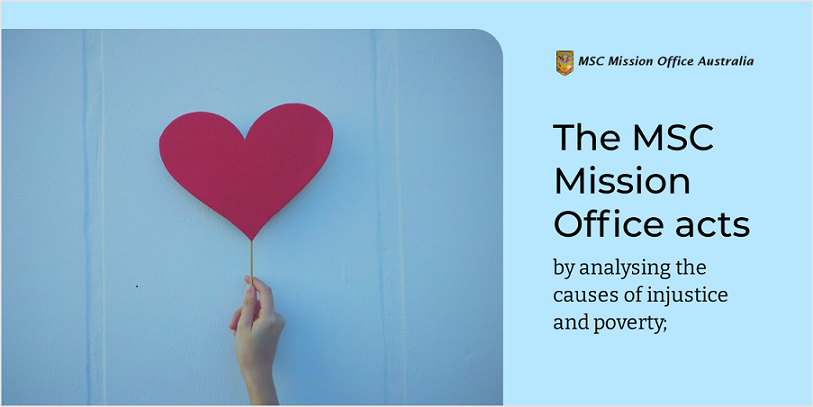
All of you who support us in your own way are part of this mission. You are an integral part of the Mission Office. We thank you for being on mission with us.
Landslide Relief Update
Prayerful wishes from Catholic Diocese of Wabag, Enga Province, Papua New Guinea.
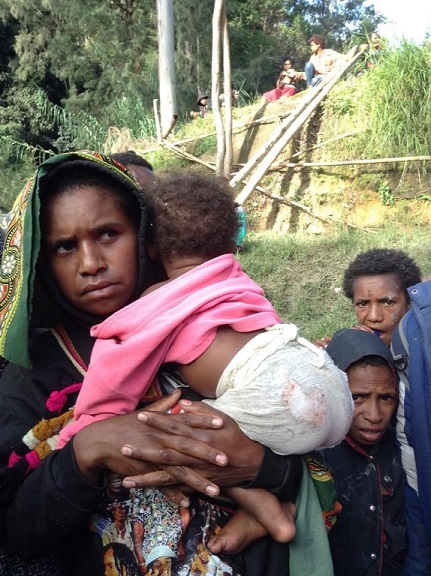
Thank you very much for the transfer of the money. Money is received in the Catholic Diocese of Wabag Account already. Thank you for the additional $45,000.
On 20.06.2024 we did the second time relief materials distribution using your fund along with medicines for the survivors. Shortly I will be back to you with the report. Heartfelt thanks to you all.
Based on the needs of the survivors we will have another materials list and with your approval we will use it wisely and send you the report.
God bless you, your staff and donors for all your hard work.
We are continuing to pray for you, MSC mission and the Individual donors in our daily prayers, adoration and Holy Mass.
United in prayers
Sr. John Mary
Secretary and project Manageress


Andre Claessens, Provincial Superior, Belgium
Andre Claessens, Provincial Superior, Belgium
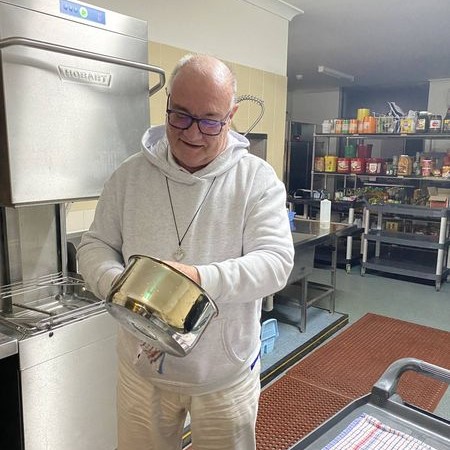
A ministry of service!
After his term as First Councillor of our General Council, Andre returned to Belgium. But, as they say, there is no rest for the wicked!

News from Belgium: a new team was confirmed by the chapter to support the Belgian Missionaries v.h. H. Heart to guide.

The new board has 4 members: André Claessens as provincial, Herman Cooreman, Clement Sathish and Bart Devos.
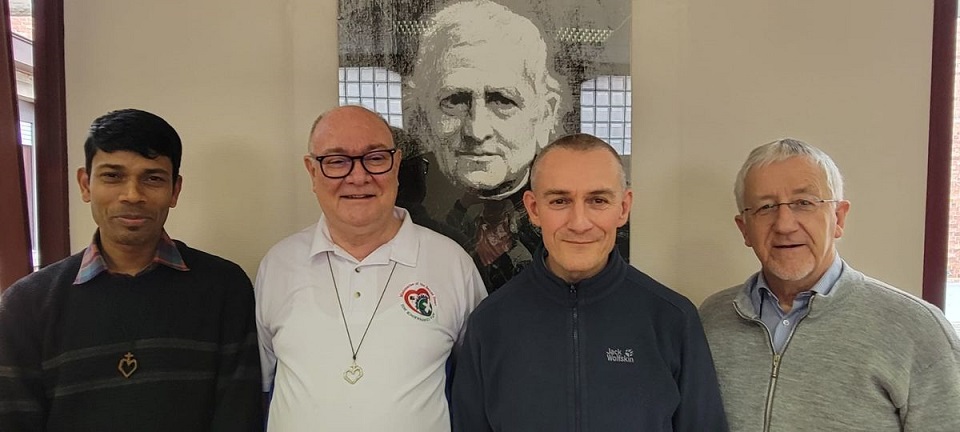
We have happy memories of Andre’s visit to Melbourne, to the Northern Territory and his presence at our Chapter last year. We won’t say “ad multos annos’, too long, but best wishes for the term of Andre’s Provincial service.
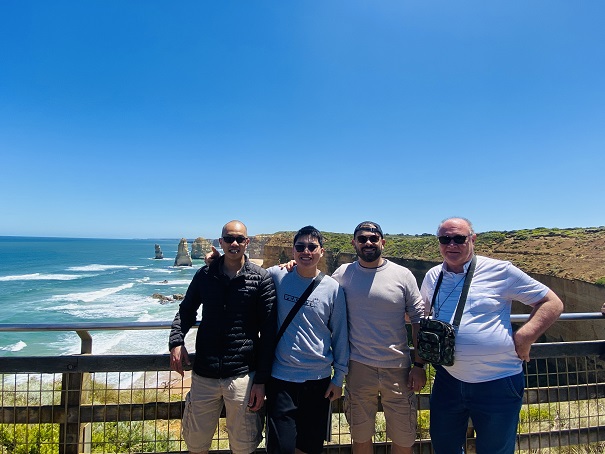
With our students on the Great Ocean Road, Victoria, at The Twelve Apostles.
Three Musketeers, The, Part 1, D'Artagnan/ Les Trois Mosquettiers, D'Artagnan
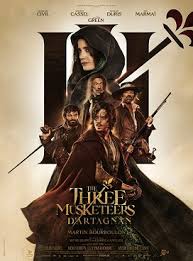
THE THREE MUSKETEERS: PART 1, D’ARTAGNAN/ LES TROIS MOUSQUETTIERES, D’ARTAGNAN
France, 2023, 121 minutes, Colour.
François Civil, Vincent Cassel, Romain Duris, Pio Marmai, Eva Green, Louis Garell, Vicki Krieps, Lyna Khoudri, Jacob Fortune-Lloyd, Eric Ruf.
Directed by Martin Bourboulon.
The novels by Dumas, pere et fils, excited 19th-century readers – and were popular around the world. Audiences revelled in the stories of the Musketeers, of the Man in the Iron Mask, the Count of Monte Cristo.
And there have been many film versions, swashbuckling in the 1930s with the Ritz Brothers, the spectacular MGM treatment in 1948, Richard Lester’s several films, action with some comic touches, American productions in the 90s, the 2000s. And, now, a spectacular French version, no expenses spared. And, it was released in two parts.
The first part of the film focuses on D’Artagnan, his origins in Gascony, confidence, riding to Paris, brashness, duels and encountering the Musketeers themselves. But, he is eventually embraced by them, finally becoming a musketeer himself. He is played very genially by François Civil. And, there are French film veterans as the of the musketeers, Vincent Cassel as Athos, Romain Duris as Aramis, Pio Marmai, less prominent in the films but jovial, Porthos.
At the beginning of each of the film is there is quite some explanation of the political background, the 1627 setting, clashes between Catholics and Protestants, the king wanting peace. There is also the complication of the relationship of the Queen with the Duke of Buckingham, her giving him her necklace as a memento, the king demanding to see it, the expedition to England by Milady and the confrontation with D’Artagnan.
There is also the story of the lady in waiting, Constance, her devotion to the Queen, the recovery of the diamonds in time, and data falling in love with her.
The King is played by Louis Garell in a quite uncharacteristic rule. Vicki Krieps is the Queen.
It is one is introduced in the first film, played with suave intensity by Eva Green. In the first film, she falls from a cliff in England when confronted by D’Artagnan, She features in the beginning of the second part, links with Cardinal Richelieu, getting a written pardon from him, but then being captured, D’Artagnan confronting her, her stealing documents to indicate who is the traitor in the war. Then she disappears but returns, confronting Athos and the memories of her past, further intrigue, to the Duke of Buckingham, unmasked, escaping and pursued until the final confrontation in flames with D’Artagnan.
The second part highlights the Civil War, the siege of La Rochelle, the various factions, the staging of the battles, hand-to-hand fighting, the bombardment of the British ships.
There is pathos at the end of the film, Constance allowing Milady to escape but then a hood over her head, taken to be hanged, D’Artagnan intervening but unable to save her.
There is the possibility for the story to be continued as Athos, returning home, finds one of Milady’s earing is in her son’s bed…
- The long popularity of the Dumas’ novels, the many film and television versions? 21st-century version? A French interpretation? The contrast with so many of the Hollywood versions?
- 1627, initial explanations, Louis XIII, religious wars, power, Cardinal Richelieu, Protestants, factions? Links with Britain?
- The visuals of the film, costumes and decor, buildings, interiors and exteriors, vastness? Yet the ordinary parts of the city, dirty, crowded? The sumptuous court sequences, the Cathedral wedding? Atmosphere of the period? The musical score?
- Audience knowledge of the Three Musketeers, the characters, their stories? Athos and his Protestant background, older? Aramis and his ecclesiastical connections? Porthos as jovial? The younger D’Artagnan, his origins, proving himself, becoming a musketeer? All for one and one for all?
- The title of part one, D’Artagnan? Age, appearance, his father’s background, his ambitions, looks, riding the horse? Arrival in Paris, over-eager, challenging the three men, the duels? Moving, the fights, the Three Musketeers? The episode with the coach, the Countess, the message, the killings, the fights? The presence of Milady? Beginning of further intrigues?
- D’Artagnan, the encounter with Constance, the attraction, the offer of lodging, her work at home, her presence in the court, with the Queen? D’Artagnan’s attraction, falling in love? His becoming a go-between? Constance, her personality, the court, fending off D’Artagnan? The issue of the necklace?
- The King, status, personality, relationship with his brother, relationship with the Queen, her affair with the Duke of Buckingham, his suspicions, the advice of Cardinal Richelieu, his religious stances, the urge to war against the Protestants? His personal manner and behaviour?
- Cardinal Richelieu here and his ambitions, his allies, bridges, aristocracy? Plot against the Queen? Milady and her writing notes, the death of the Countess, her taking her place, the meeting with D’Artagnan, his overhearing, her attack on him, his escape?
- The jovial musketeers, D’Artagnan as a cadet, their admiring him? The situation with Athos, the dead woman, his being arrested, tried, Protestant, condemned to death?
- The Queen, deceived by the note, the arrival of the Duke of Buckingham, the relationship, the memento of the necklace? The attack, the fights, the Duke and the Queen, his departure?
- The King, suspicions about the necklace, wanting to see it? going to England, disguised the ball, with the Duke, the seduction, taking the necklace? D’Artagnan commission to go to England, at the ball, with the Duke, the pursuit of Milady, the chase along the cliffs of Dover? Her falling into the English Channel?
- The tension, D’Artagnan returning, the Queen substituting a necklace, the demand of the King, Constance receiving D’Artagnan, the kiss, the necklace, the reaction of the king? Of Cardinal Richelieu?
- The King’s brother, planning, the arranged marriage, the ceremony and the Cathedral? The Protestants, the release of Athos? Their being disguised as monks, the choir? The ceremony? The shot, Athos and the warning, the King’s life saved? The fighting, the arrests? The king deciding to go to war against the Protestants?
- Athos and his being pardoned, D’Artagnan officially becoming a musketeer?
- The sinister characters, overhearing, the violence, the attack on Constance?
- The suspense and the film to be continued?
Three Musketeers, The, Part 2, Milady/ Les Trois Mosquettiers, Milady

THE THREE MUSKETEERS: PART 2, MILADY LES TROIS MOUSQUETTIERES, MILADY
France, 2023, 121 minutes, Colour.
François Civil, Vincent Cassel, Romain Duris, Pio Marmai, Eva Green, Louis Garell, Vicki Krieps, Lyna Khoudri, Jacob Fortune-Lloyd, Eric Ruf.
Directed by Martin Bourboulon.
The novels by Dumas, pere et fils, excited 19th-century readers – and were popular around the world. Audiences revelled in the stories of the Musketeers, of the Man in the Iron Mask, the Count of Monte Cristo.
And there have been many film versions, swashbuckling in the 1930s with the Ritz Brothers, the spectacular MGM treatment in 1948, Richard Lester’s several films, action with some comic touches, American productions in the 90s, the 2000s. And, now, a spectacular French version, no expenses spared. And, it was released in two parts.
The first part of the film focuses on D’Artagnan, his origins in Gascony, confidence, riding to Paris, brashness, duels and encountering the Musketeers themselves. But, he is eventually embraced by them, finally becoming a musketeer himself. He is played very genially by François Civil. And, there are French film veterans as the of the musketeers, Vincent Cassel as Athos, Romain Duris as Aramis, Pio Marmai, less prominent in the films but jovial, Porthos.
At the beginning of each of the film is there is quite some explanation of the political background, the 1627 setting, clashes between Catholics and Protestants, the king wanting peace. There is also the complication of the relationship of the Queen with the Duke of Buckingham, her giving him her necklace as a memento, the king demanding to see it, the expedition to England by Milady and the confrontation with D’Artagnan.
There is also the story of the lady in waiting, Constance, her devotion to the Queen, the recovery of the diamonds in time, and data falling in love with her.
The King is played by Louis Garell in a quite uncharacteristic rule. Vicki Kireps is the Queen.
It is one is introduced in the first film, played with suave intensity by Eva Green. In the first film, she falls from a cliff in England when confronted by D’Artagnan, She features in the beginning of the second part, links with Cardinal Richelieu, getting a written pardon from him, but then being captured, D’Artagnan confronting her, her stealing documents to indicate who is the traitor in the war. Then she disappears but returns, confronting Athos and the memories of her past, further intrigue, to the Duke of Buckingham, unmasked, escaping and pursued until the final confrontation in flames with D’Artagnan.
The second part highlights the Civil War, the siege of La Rochelle, the various factions, the staging of the battles, hand-to-hand fighting, the bombardment of the British ships.
There is pathos at the end of the film, Constance allowing Milady to escape but then a hood over her head, taken to be hanged, D’Artagnan intervening but unable to save her.
There is the possibility for the story to be continued as Athos, returning home, finds one of Milady’s earing is in her son’s bed…
- The long popularity of the Dumas’ novels, the many film and television versions? 21st-century version? A French interpretation? The contrast with so many of the Hollywood versions?
- 1627, initial explanations, Louis XIII, religious wars, power, Cardinal Richelieu, Protestants, factions? Links with Britain?
- The visuals of the film, costumes and decor, buildings, interiors and exteriors, vastness? Yet the ordinary parts of the city, dirty, crowded? The sumptuous court sequences, the Cathedral wedding? Atmosphere of the period? The musical score?
- Audience knowledge of the Three Musketeers, the characters, their stories? Athos and his Protestant background, older? Aramis and his ecclesiastical connections? Porthos as jovial? The younger D’Artagnan, his origins, proving himself, becoming a musketeer? All for one and one for all?
- Continuation of the story? The focus on Milady? The continued story of D’Artagnan? Of the Musketeers? Of the King and the Queen? Of the religious wars?
- Athos and his story of his wife, the betrayal, branding, her being hanged, his visit to his son, promise to return after the war? Audience awareness of Milady, the issue of the Queen’s diamonds, the confrontation with D’Artagnan, her relationship with Richelieu? Are being captured and imprisoned? The confrontation with D’Artagnan, his thinking she was Constance, the escape, the pursuit, her documents and the identity of the mastermind?
- Contact with Richelieu, going to England, the confrontation with the Duke of Buckingham, Constance recognising her, her arrest? Constance coming to see her, unwilling to give her a knife, Constance in the change of clothes, her escape?
- Athos finding out the truth, the confrontation with her, his love, her drawing the knife, the Musketeers arriving in time, Athos letting her go, D’Artagnan pursuing her, in the burning building, the final fight, her death?
- The civil war situation, Protestants and Catholics, the king wanting peace, his brother leading the battle, thanking his brother, in action? Betrayal?
- The battle sequences, the staging, La Rochelle, the battlements, the cannon, the British ships and their destruction? The hand-to-hand fighting?
- The role of the Musketeers, the role of de Treville, involvement, the fighting, undercover, the betrayals?
- The background story of Aramis, his sister, her pregnancy, going to confront the father, temptation for a duel, the cabin, his death, the presence of Porthos, going back to his sister, her place in the conference, tending the wounded, his wounds, falling in love with her? The happy ending? Aramis and his reaction, celebrating the wedding?
- The various factions, Chalais and his betrayal, with milady, with Constance, the King’s brother killing him?
- D’Artagnan, visiting the Queen, searching for Constance, the Queen and her relationship with the King, memories of Buckingham, sending Constance to him?
- The trial, the entry of the Musketeers, the revelation of the truth, the pardon, the condemnation of his brother?
- The story continuing – and Aramis finding Milady’s earing in his son’s room…?
Inside Out 2
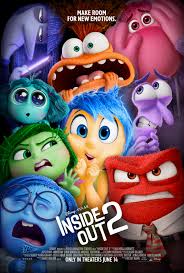
INSIDE OUT 2
US, 2024, 96 minutes, Colour.
Voices of: Amy Pohler, Maya Hawke, Kensington Tallman, Liza Lapirar, Tony Hale, Lewis Black, Phyllis Smith, Ayo Edebiri, Lillimar, Grace Lu, Sumayyah Nuriddin-Green, Adele Exarchopoulos, Diane Lane, Kyle MacLachlan, Paul Walter Hauser, June Squibb, Frank Oz, John Hertzenberg, Flea.
Directed by Kelsey Mann.
So, this is what puberty is like!
In 2015, Pixar studios won the Oscar for best animation film, Inside Out. It was very very popular, children enjoying it, parents given food for thought. The basic idea was quite creative, imagining the different feelings inside an 11-year-old girl, Riley, who had to move to San Francisco because of her father’s new job. And how to manage these feelings? The answer is in personifying them, engaging cartoon characters up there on the screen, working in the control studio which stood for Riley’s inner life. And, a very entertaining range of voices.
It has taken eight years and more for the sequel. And most audiences have found it well worth the wait.
But, how to replicate the ingenuity in the screenplay, and to engage the audience – and broaden it? The answer is that it is Riley is now 13, has reached the stage of puberty. And, of course, there are quite a number of new feelings.
Audiences will remember the leadership of Joy (again Amy Poehler), counterbalanced by Anger, reactions by Disgust, and, lurking there, Fear. And the very attractive emotion eliciting quite some pathos which sometimes takes over, Sadness. Joy is in control in the control room, and the emotions enjoy themselves in Riley’s reactions, devoted to her parents, good student, kindly in helping others in embarrassing moments, and, an interesting choice of sport for the film, talented in ice hockey. The feelings are able to relegate bad memories to a storeroom – where a huge character, called Dark Secrets, lurks. And, in the present, an old lady emotion, Nostalgia, keeps appearing but is told to go back and wait for 10 more years!
Everything is going smoothly and then the new brigade of emotions arrives, wanting to take over, different emotions for a 13-year-old and her changes in life. They are led by Anxiety, intervening all the time, various scenarios for Riley’s future, and mixing her up with instant changes of moods, answering her parents back, extremes of happiness, invited to a hockey camp by a top coach, learning that her two friends will be going to a different school, becoming very erratic in walking out on them, foot in mouth with the new friends often – not easy being a young teenager.
Along with Anxiety feelings of Ennui (Boredom personified, long-haired, languid, French accent), and, rather green, Envy. There is also the very large Embarrassment who blushes and hides as Reilly so frequently become self-conscious.
Mom and Dad are puzzled. The veteran feelings are also puzzled and decide to go on a rescue mission, rebelling against Anxiety’s takeover.
The Inside Out films show Pixar studios (remembering Toy Story) at their best, vivid, full of colour, the feelings in all shapes and sizes, and a great variety of voices – with going back to look at the voice cast to appreciate this.
As, with the previous film, there is a lot for parents to think about, to appreciate a lot of the emotional turmoil, erratic changes, moods, they might then remember from their own teenage years and understand their children better. And, there is a great deal to think about for the teenage audience who might find this wonderful personification of feelings holding up a mirror, delightful and humorous, to their own mood swings.
Looking forward to Inside Out 3, and how many more moods there will be in later adolescence!
- Popularity and awards for Inside Out? The appeal to younger audiences, parent audiences, understanding of emotions via cartoon characters and personifications?
- Memories of the first film, welcoming of the second film? Riley moving from 11 to 13, puberty?
- The style of the animation, colourful, vibrant, motions, the settings, the mind control in the Sense of Self? The range of characters, colours? Shapes and sizes? Movements? Riley’s world, the realistic world, at home, at school, playing hockey? The musical score? The skills of the voice cast?
- The premise of the headquarters for mind and emotions control, Sense of Self? Look and sound and personalities of Joy, Sadness, Fear, Anger, Disgust? Their interactions? Each of the contributions, the vitality of Joy, the reserve of Sadness, the outbursts of Anger, the hiding of Fear, the reactions of Disgust?
- Riley, the audience knowing her in the past, liking her, turning 13, relationship with her parents, their concern and love, her playing hockey, her helping Bree with the spilt coins, Grace helping, the bonding? The sharing, playing together?
- Everything going smoothly and control, Riley and her emotions, removal of past memories, said memories? The arrival of the new emotions? Their look and sound? The shape and colour and voice of Anxiety? The green of envy? The languid look and French accent of Ennui, boredom? And the huge shape and behaviour of Embarrassment?
- The effect of Anxiety taking over, the plan, relegating the Sense of Self? The continued moments of embarrassment? Ennui intervening only when necessary?
- Riley, skill at hockey, the coach, the invitation to the summer camp, hopes, the three friends, the news that the other two were going to different school? Anxiety and the others taking over, the erratic and mixed emotions, her reaction to her parents? The behaviour at the camp, the mistake and everybody being penalised, embarrassment? Her admiring Val, the other team members, playing up to them, the discussions about popular groups and her being embarrassed? The temptation to give up her friends? The confusion?
- Behind-the-scenes, the old emotions and their strategy, going back, the old memories, the Dark Secret, Sadness and her getting the commission to investigate? Riding on the Stream of Consciousness, the different vehicles, broccoli…?
- Anxiety, looking at the results of Riley’s confusion? The move to coordinate, to work together? The humour of the old lady of Nostalgia appearing and being told to go back and reappear 10 years later?
- Riley, the end of the camp, with her parents, with Val and the others, reunited with her friends?
- All the emotions content, Riley moving from childhood into adolescence? The finale at a looking at her phone, the selection of the team, her smile?
Third Murder, The

THE THIRD MURDER
Japan, 2017, 124 minutes, Colour.
Masaharu Fukuyama, Suzu Hirose.
Directed by Hirokazu Kore-eda.
Hirokazu Kore-eda has been a significant Japanese writer-director for more than 20 years. Many of his films previous to The Third Murder have been concerned with family, Nobody Knows, Like Father, Like Son, Our Little Sister, I Wish. This film is quite a change of pace.
Over several months, the director consulted with a number of lawyers, staging potential cases so that he could understand the workings of the court, the role of lawyers, especially defence lawyers, the nature of charges, the modification of charges, pleas for lesser penalties…
The film opens strikingly with the central character killing another. The audience has seen this scene.
However, the attacker has quite a back story, murder and robbery 30 years earlier, a jail sentence, now released, fired from his work at the factory, killing the owner. He appears throughout the film, generally composed, discussing the issues, but changing his motivation and implicating the wife of the owner, the revelation that the owner was abusing his daughter, the issue of stealing a wallet, sending the money to his estranged daughter…
The other central character is the young lawyer whose father, a prominent judge, has condemned the murderer 30 years earlier. The young lawyer wants to get to the truth but is caught up in the role of defence, the modification of charges, the attempts to identify the correct motivations. He goes to the countryside to talk with his father, to talk to the murderer’s wife who spurns him. He also has his personal story, a divorce, the little daughter, a sympathy towards the daughter of the murdered man.
Ultimately, there is a court case, with the murderer then denying that he killed the factory owner. The issue of the film seems to be looking at the characters involved in the crime and the issues, different perspectives, possible perspectives. Audiences may be thinking of Kurosawa’s Rashomon with the same events seen from quite different perspectives. The director was to use this theme for his 2023 film, Monster.
- The work of the director? Family films? Issues with different perspectives?
- The city of Yokohama, homes, buildings, legal offices, courts? The visit to the countryside, life in the village? The musical score?
- The prologue, the dark, Mishumi, the attack on the factory owner, his death, burning the body? The audience seeing the crime?
- The legal situation, Shigemori, status as a defence lawyer, the reputation of his father, his personal life, divorce, the scene with his daughter? The superior, handing over the case to the younger lawyers, a guilty verdict, death penalty? The discussions, the legal aspects?
- The impact of the film for the audience in judging the character of Mishumi, the role of the defence lawyers, listening the charges, formulating defence? Issues of truth?
- The story of Mishumi, the crime 30 years earlier, his jail sentence, security in jail, getting out, working at the factory, the clashes with the owner, his talking gambling, his being fired, dislike of the owner? Audience impression of him in the interviews with the lawyers? Changing his story, the lawyer believing him, the audience believing him or not?
- The possible motivations, resentment at being fired, stealing the owner’s wallet, the story of the wife hiring him to kill and the payment to him, the variation for the money and the fake labels and the success of the company, his sympathy for the daughter, her limp, the story of her being abused by her father? The lawyer imagining the scene with the two at the crime? Mishumi and his taunting the lawyers with the various possibilities?
- Shigemori, his continued interest, his being told to leave the case, his assistants, the interviews, with the victim’s wife and the issue of a relationship, her story about the fake labels, the interview with the daughter, the story of the abuse? His compassion? Is interview with Mishumi’s wife, her disdain, his daughter, the limp?
- Visiting his father and their discussion?
- The building up of the case, altering the charges? In the court, Mishumi and his denial, the impact on the proceedings of the case, the details of the court, the lawyers, the role of the judge? Is being found guilty?
- Shigemorie and his visit to Mishumi after the event, the discussions, what really happened, the different perspectives, the nature of truth?
Rock Hudson: All that Heaven Allowed
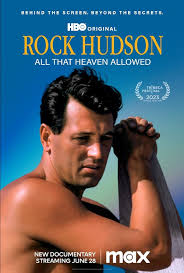
ROCK HUDSON: ALL THAT HEAVEN ALLOWED.
US, 2023, 104 minutes, Colour.
Directed by Stephen Kijak.
Rock Hudson was a popular Hollywood star from the 1950s to the 1970s in film and then on television. He began as something of a heartthrob star at Universal Studios but then made an impact, directed by Douglas Sirk, in Magnificent Obsession and All That Heaven allows, co-starring with Jane Wyman. And then he made Giant and was Oscar-nominated. 1956 to 1966 he appeared in quite a range of films, westerns, dramas and, especially romantic comedies with Doris Day. In 1966, he appeared in Seconds, a black and white serious drama which confounded his audiences.
During the 1970s into the 1980s, he appeared on television with McMillan and Wife and also appeared in Dynasty.
This documentary traces the film career of Hudson with a great number of clips.
However, Rock Hudson is known as the major Hollywood star who contracted AIDS and died of AIDS, 1985, aged 59. His homosexuality was known in Hollywood, it was a well kept secret, even a sham marriage contracted with his agent secretary, Phyllis Gates. While there were rumours and innuendos, Hudson kept his private life very private.
This documentary is interested in that private life, his Navy service, his finding an agent, opportunities wrecked at Universal and then the momentum of his more serious career. There are a great number of interviews with Hollywood personalities, agents, actors and, especially, a range of partners. There is quite a deal of footage of Hudson with his friends and partners, video material, many photographs – and the interviewees remembering him, praising him, the sexuality issues, the impact of AIDS, Hudson and his illness, even while filming Dynasties (and a notorious kissing sequence when he was ill with Linda Evans and her comments about the issue). There are stories of his treatment, flight to Paris, medical authorities wary, friends and associates frightened, as so many were at the time, of contracting AIDS.
Which means that this documentary is for film buffs but also for those who want to know more and understand more about Hudson and his life and AIDS. Hudson was supported at the end especially by Elizabeth Taylor, who starred with him in Giant, her fundraising, raising consciousness, and support from Doris Day. There are some sequences where he appeared with Ronald Reagan – but the Reagans were reluctant in 1985 to tackle the issue of AIDS.
One of the main features of this documentary is the extraordinary selection of clips from the widest range of Hudson’s films, clips used to illustrate what was happening in his life, taking them out of the context and putting them into his context. Film buffs will enjoy trying to identify the various films. An example is a sequence with Bill Ives from The Spiral Road, 1962, with Hudson talking about the disease and treatment but presented in the documentary as if he were talking about AIDS.
In fact, Rock Hudson was the only major Hollywood star to have died of AIDS.
In a Valley of Violence
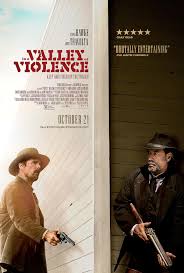
IN A VALLEY OF VIOLENCE
US, 2016, 97 minutes, Colour.
Ethan Hawke, John Travolta, Taissa Farmiga, James Ransone, Karen Gillan, Toby Huss, Burn Gorman.
Directed by Ti West.
Writer-director, Ti West, began his career with ventures into horror films, gaining great deal of attention with the Innkeepers in 2011. What he continued his career with films, his main work was in television until the 2020s when he made a series of films, well received, starring Mia Goth, sometimes a blend of sex and horror, X, Pearl, Maxxxine. However, this is a Western revenge.
Ethan Hawke plays the central character, Paul, ex-army, having left his wife and daughter, wandering, initially encountering a bogus preacher, Burn Gorman, taking his horse, riding into an abandoned mining town.
While minding his own business in the saloon, he is confronted by an exceedingly brash self-centred Healy, James Ransone, who challenges him to a fight. Paul simply knocks him out. However, Gilly is the son of the local Marshall, an interesting role for 60 year old John Travolta. There are two young women running the local hotel,, Karen Gillan, and the young Maryann, Taissa Farmiga, who is attracted to the stranger.
While the Marshall arranges a kind of peace, Paul rides out of town with his dog (whom everybody admires and asks whether he can do tricks, Paul relying that he bites, though we do see a few tricks, especially his wrapping himself in a blanket!), Gilly and his associates kill the dog, threatening Paul, throwing him from a cliff. He survives.
Which means then that he will return, wreak vengeance on each of the members of the group – which he does. And there will be a confrontation with the Marshall.
Audience emotion is on Paul’s side while they are of the conscience issues of the wreaking vengeance (and his strong motivation of revenge because of the killing of the dog).
Quite an effective vengeance Western achieving what it set out to do.
- The title, expectations? The Western context?
- The location photography, town, the streets, bar, Marshall’s office, jail, hotel rooms, the countryside, the mountains? The musical score?
- Paul and his story, background of enlistment, his war experience, the effect on him, leaving his wife and daughter, his companionship with his dog, talking to the dog? The encounter with the priest, hostile, violent, taking his horse? Arriving in the town, searching for Dollar Bill, in the saloon?
- Gilly, boasting, the salesman and his field, ousted, Gilly confronting Paul, silent, the challenge to the fight, the five dollar bet, the barman and his caution? Crowd gathering, Paul punching Gilly, his collapse?
- The Marshall, meeting Paul, the discussions, Gilly his son, Deputy, a father’s care? Willing Paul off? And his encounter with Mary Anne, the bath, flirting, Mary Anne and her relationship with Ellen, Gilly’s fiance, urging him on?
- Paul leaving, camping, with the dog, the ambush by Gilly and his men, the shooting of the dog, threatening Paul, on the is one, pushing him over? His recovery, returning to the town, spirit of vengeance?
- Paul and his return, the welcomed by Mary Anne? Roy, his manner, the bath, with Mary Anne, Paul coming in, the confrontation, killing him, the blood? Ellen and her response?
- The Marshall, confronting Gilly, beating him? Yet protecting him? The plan, Harris going onto the roof, Paul confronting him, the final conversation, Paul merciless, shooting him? Tubby, his fear, urged by the Marshall, his self-assertion, against Tubby, his name Lawrence, standing in the window, shot?
- Gilly, searching for Paul? Paul and the confrontation with the Marshall, out in the street, the Marshall laying down his arms, Gilly confronting, the challenge, the shooting, the death of the Marshall?
- The barn, Gilly searching, the news, the fight? Going to the hotel? The women, Gilly and his protecting them, and her pregnancy, Gilly and his surly response?
- Paul, telling Mary Anne his story, her supporting him? The future?

